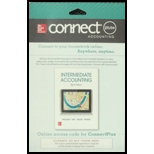
Concept explainers
Ledger:
Ledger is the book, where the debit and credit entries recorded in the journal book are transferred to their relevant accounts. The entire accounts of the company are collectively called the ledger.
Debit: A debit, in an accounting term refers to the left side of an account. The term debit can be denoted by (Dr). The amounts which are recorded on the left side of the account are known as debiting.
Credit: A credit, in an accounting term refers to the right side of an account. The term credit can be denoted as (Cr). The amounts which are recorded on the right side of the account are known as crediting.
Rules of debit and credit:
“An increase in an asset account, an increase in an expense account, a decrease in liability account, and a decrease in a revenue account should be debited.
Similarly, an increase in liability account, an increase in a revenue account and a decrease in an asset account, a decrease in an expenses account should be credited”.
To Indicate: The accounts to be debited, and credited by account number for each of the October 2016 transactions.
Want to see the full answer?
Check out a sample textbook solution
Chapter 2 Solutions
INTERMEDIATE ACCT.-CONNECT PLUS ACCESS
- No AI A trial balance includes:A. Only revenue and expense accountsB. All accounts with balancesC. Only permanent accountsD. Only assets and liabilitiesarrow_forwardI need help with this general accounting problem using proper accounting guidelinesarrow_forwardHello Needed Answer of Financial Accounting Question with Correct Methodarrow_forward
- No AI Which account is increased with a credit?A. CashB. Salaries ExpenseC. Accounts ReceivableD. Service Revenuearrow_forwardWhich account is increased with a credit?A. CashB. Salaries ExpenseC. Accounts ReceivableD. Service Revenuearrow_forwardCan you solve this general accounting problem using accurate calculation methods?arrow_forward

 AccountingAccountingISBN:9781337272094Author:WARREN, Carl S., Reeve, James M., Duchac, Jonathan E.Publisher:Cengage Learning,
AccountingAccountingISBN:9781337272094Author:WARREN, Carl S., Reeve, James M., Duchac, Jonathan E.Publisher:Cengage Learning, Accounting Information SystemsAccountingISBN:9781337619202Author:Hall, James A.Publisher:Cengage Learning,
Accounting Information SystemsAccountingISBN:9781337619202Author:Hall, James A.Publisher:Cengage Learning, Horngren's Cost Accounting: A Managerial Emphasis...AccountingISBN:9780134475585Author:Srikant M. Datar, Madhav V. RajanPublisher:PEARSON
Horngren's Cost Accounting: A Managerial Emphasis...AccountingISBN:9780134475585Author:Srikant M. Datar, Madhav V. RajanPublisher:PEARSON Intermediate AccountingAccountingISBN:9781259722660Author:J. David Spiceland, Mark W. Nelson, Wayne M ThomasPublisher:McGraw-Hill Education
Intermediate AccountingAccountingISBN:9781259722660Author:J. David Spiceland, Mark W. Nelson, Wayne M ThomasPublisher:McGraw-Hill Education Financial and Managerial AccountingAccountingISBN:9781259726705Author:John J Wild, Ken W. Shaw, Barbara Chiappetta Fundamental Accounting PrinciplesPublisher:McGraw-Hill Education
Financial and Managerial AccountingAccountingISBN:9781259726705Author:John J Wild, Ken W. Shaw, Barbara Chiappetta Fundamental Accounting PrinciplesPublisher:McGraw-Hill Education





